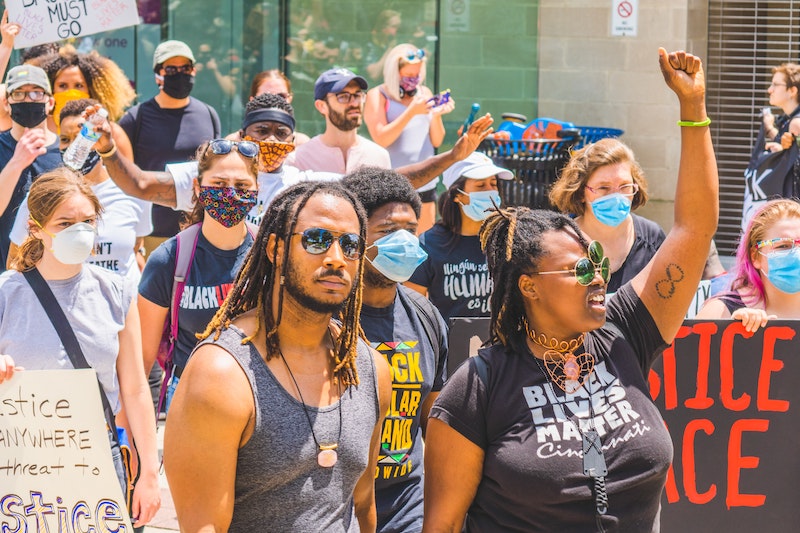The crises we see today — COVID-19, racial injustice and violence, and more — are far too familiar for far too many people, reflecting decades of systemic failure.
At Amplifying Impact, the Mission Investors Exchange National Conference, co-chair Lisa Hamilton of the Annie E. Casey Foundation, explained, “We have been allowing far too many folks to live in crisis. This moment requires leaders who are willing to make bold choices.”
Indeed, at the heart of the conference was a clarion call for foundations to step up as leaders and take on the difficult, long-term battles for systemic change.
Hundreds of impact investors participated in the online conference from May 7-22. Originally scheduled to be held in Atlanta, MIE pivoted to create a virtual event, recognizing the urgent need to convene mission-driven investors given their critical role in advancing equity and impact in this time of crisis.
Throughout the conference, we saw how foundations are using all the tools at their disposal — grants, impact investments, policy, and social capital — to push for these structural changes. Together, they offer a roadmap for how foundations can deepen the impact of the impact investing movement — through times of crisis and beyond:
Address racial inequity in the capital markets, at all points of exchange. Dr. Robert Ross of The California Endowment helped open the Conference by calling for a “national agenda for reorienting capitalism with an equity lens.” Several other leaders described their long-time efforts to advance racial equity across all organizational practices, by investing in entrepreneurs of color, working to increase diversity among asset managers, and reducing unconscious biases driving investment decision-making.
La June Montgomery Tabron of W.K. Kellogg Foundation further explained that “in order to walk the talk for racial equity, we had to go beyond the 5% and engage the 95%.”
Overheard at the Mission Investors Exchange: Inclusive and catalytic capital
Utilize the full impact investing toolkit. Several foundations have served as testing grounds for aligning the endowment — the 95% — with mission and values. Thanks to their efforts, including new research by the Rockefeller Brothers Fund released at the Conference, we have mounting evidence that aligning the endowment can advance both mission and financial sustainability.
More foundations must therefore ask, “why are we stuck?”, reiterated Sherece West-Scantlebury of Winthrop Rockefeller Foundation during Place-Based Investing Week. Foundations can choose from a variety of investing tools and entry points, including mission-driven cash deposits, catalytic capital, diversity in asset management, and much more as they pursue ever-greater alignment.
Democratize decision-making. Heron Foundation further unveiled plans for a radical transformation of their operating model and endowment, in which they will move money and decision-making power into the hands of the local communities in which they work. Heron’s Dana Bezerra explained that implementing this untried strategy will come with learning — rather than “failure.” And isn’t that what philanthropic capital is for? Noted Preeti Bhattacharji of Heron, “The point of this money is not to make more money. It’s to achieve our mission.”
Stretch goal for foundations: Shift power, as well as assets, for the post-COVID economy
Mobilize with urgency. On January 26, at the outset of the COVID-19 crisis, the Gates Foundation announced it would provide $10 million in emergency funds and technical support to help frontline responders in China and Africa contain the global spread of COVID-19. Just 10 days later, they committed $100 million (and soon thereafter another $150 million) in grants and impact investments to help strengthen detection efforts, development of vaccines, and rapid procurement of medical supplies.
In February, the Colorado Health Foundation partnered with the Colorado Governor’s Office to quickly stand up the Colorado COVID Relief Fund and has since used a mix of grants and loan relief to support access to PPE and medical supplies and bolster community health centers on the frontlines.
What we quickly learned from dozens of foundation leaders was that COVID-19 has been a “moment of truth” in many ways, calling on us to demonstrate our willingness to move nimbly, double down on impact, and embrace the discomfort that comes with risk and innovation. For many, that call has been answered.
From changing reporting requirements and deferring payments on outstanding loans, to creating relief funds and activating partnerships with government, foundations have quickly leveraged their networks and skills to face these crises. In the words of Greg Neichin of Ceniarth, who spoke at the Conference: “We have a strategic plan. It’s called doing things.”
These efforts provide a potential roadmap for foundations to lead by doing and serve as society’s “risk capital” where other sectors can’t, won’t, or shouldn’t.
“We are a changed society,” reflected the Andrew Young, civil rights icon and foundation leader, who concluded the third day of the conference with a powerful call to action rooted in lessons from the civil rights movement. “I think that impact investing and the crises of our time are going to give us a new and better world.”
Working together, we can seize this moment and build a more just, equitable, and sustainable society.
Matt Onek is the chief executive officer of Mission Investors Exchange, a network for foundations dedicated to deploying capital for social and environmental change.











